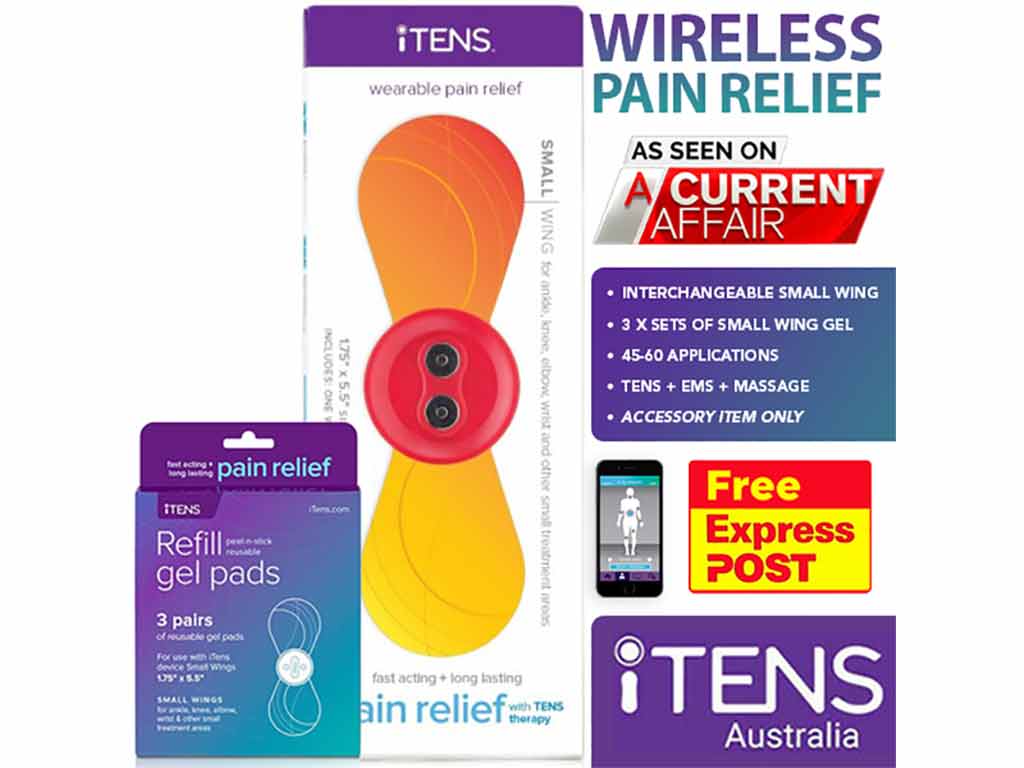
Transcutaneous Electrical Nerve Stimulation (TENS) is a type of therapy that uses mild electrical currents for pain management. Using a TENS unit for neck pain is one of the many benefits a device can give. It helps relieve stiff neck and shoulder pain due to sore muscles or underlying conditions. The device is portable and easy to use, which helps in improving the range of motion of the joints.
Neck pain is a common pain that many people experience daily. It can be due to various reasons, such as working with computers for long hours or repetitive motions. Osteoarthritis, cervical stenosis, and pinched nerves are also contributing factors to pain or discomfort in the neck. In the following sections, we will explore how a TENS unit relieves pain, how to operate the device, and the safety precautions to follow to avoid risks.
Using a TENS Unit for Neck Pain – How It Works
Pain management takes many forms. Oral painkillers, physical therapy, and gentle massages are the traditional methods to get relief. In recent years, doctors and physiotherapists have been recommending using a TENS unit for neck pain. It is a non-invasive and drug-free approach for those who want to avoid or reduce their intake of medications.
A TENS machine works by delivering electrical pulses to the affected area to stimulate the sensory nerves. The electrical stimulation activates the natural mechanisms of the body to fight pain. It is believed that the currents can override the nerves that act as pain gate controllers in the spinal cord. This closes the pathways of the pain signals, hindering them from reaching the brain.
TENS therapy also stimulates the production of endogenous substances like endorphins and enkephalins. They are hormones that bind to opioid receptors to suppress pain sensations. Additionally, the low soothing pulses of the unit boost circulation in the area. This delivers more oxygen to the neck to reduce inflammation and relax tense muscles.
Advantages of Using the Device
- Safe and drug-free: TENS machines do not use any kind of medication. Hence, it does not have the associated side effects of medicines, including harm to the digestive system.
- Non-invasive: it does not involve incisions or other intrusive procedures. The electrode pads adhere to the skin without the need for needles.
- Portable: TENS devices are compact and easy to carry around. They can be used at home, at work, or while travelling.
- Easy to operate: the device comes with simple instructions and pad placement guides.
- Localised pain relief: it targets the affected area directly, minimising risks to other tissues or organs.

Using a TENS Unit for Neck Pain – How to Operate
The first step in using a TENS unit for neck pain is to familiarise the components or features of the device. A TENS machine has simple buttons that control the settings, such as intensity, pulse duration, frequency, and pre-set modes. In some models, these controls are accessible through a wireless controller or smartphone app.
To relieve neck pain, place the electrode pads on the base of the neck on either side of the spinal column. For some, position the electrodes beside the shoulder blades for pain on the particular side. Once the pads are firmly in place, turn on the TENS unit and adjust the settings. Users can modulate the patterns of the pulses according to their type or severity of pain.
Physical therapists or pain specialists advise to start with the lowest intensity. Then, gradually increase the level until the pulses feel strong but comfortable. Furthermore, the best practice of TENS treatment is to set the session for 20 to 30 minutes. This duration is enough to stimulate pain-relieving effects while avoiding skin irritation.
Areas to Avoid
The neck region is one of the most sensitive areas of the body. It is composed of vital organs, tissues, and nerves that connect to the brain. Thus, users must avoid placing the electrodes near the eyes and ears. People should also stay away from the carotid artery on the front and sides of the neck.
Another area to avoid is direct electrode placement to the spinal column. This is to prevent any risk of electrical shock or interfere with the spinal nerves that are responsible for pain gating. Additionally, do not put the pads on skin surfaces with irritation, rashes, or open wounds.

Using a TENS Unit for Neck Pain – Precautions
Before using a TENS unit for neck pain, it is essential to know the suitability of this device for particular conditions. A health professional can guide patients on the treatment settings and specific pad placement. Individuals with heart disease, epilepsy, cardiac pacemakers, and pregnant women should seek medical advice before use.
As previously mentioned, avoid sensitive areas like the head and front of the neck to avoid adverse effects. Moreover, keep the stimulation settings to a comfortable or tolerable range. Avoid extreme levels, as it may cause burns, skin irritation, or further nerve damage. Similarly, do not overuse the TENS unit. It is advisable to keep the treatment session below one hour.
In some cases, individuals may experience allergic reactions because of the electrode pads. When this occurs, discontinue use and remove the pads. Clean the area with mild soap and allow the skin to rest until the side effects subside. Furthermore, do not use electrotherapy devices near water and while sleeping or driving. Lastly, replace the pads if it no longer stick firmly on the skin.
When to Seek Medical Help
Patients with neck pain should seek medical help if the symptoms do not improve, even after using pain medication, TENS, or other remedies. For sudden or severe pain, consult a doctor immediately. Likewise, seek medical help if the cervical pain or side effects of TENS persist for a few days.
It is also vital to consult a pain management professional if the pain extends to other areas, such as the arms and back. This could indicate an underlying condition that necessitates medical treatment or intervention. Always ensure to follow the safety guidelines when using a TENS unit.
Conclusion
Using a TENS unit for neck pain can be an effective way to manage chronic conditions. TENS is a drug-free option to alleviate neck pain and other discomfort. The device sends mild electrical currents to the affected area to interrupt pain signals and release endorphins. These mechanisms help reduce the overall pain sensations without the need for pain medications. Additionally, it is safe for frequent use, making it an ideal alternative treatment for people with chronic pain.
Operating the device is relatively easy. Users should identify the proper electrode placement and adjust the settings according to their level or type of pain. It is best to start at the lowest intensity and gradually increase for safe use. Moreover, avoid sensitive areas to prevent potential skin irritation and other discomforts. For safe and effective results, it is advisable to consult a pain management professional before use. TENS machines are available in pharmacies or online without a prescription.







